|
The Sistine Chapel in the Vatican City is one of the most visited chapels in the world due to its impressive fresco paintings by the Renaissance painter Michelangelo Buonarroti (1474-1564). In 1505 Pope Julius II (1443-1513) asked Michelangelo to paint the ceiling, which at 68ft high was a daunting task. Initially, Michelangelo refused. He wanted to be known as a sculptor rather than a painter but eventually agreed to the job in 1508. For four years, Michelangelo stood on high platforms, painting the ceiling above his head with Biblical scenes and characters. After completion, Michelangelo happily returned to his sculptures, only returning to the chapel to paint a fresco above the altar in 1536. For a limited time, people in London can see a life-sized, close-up of Michelangelo’s paintings. Those who have visited the Sistine Chapel will know that it is impossible to study the ceiling in detail because of the height of the building. This unique exhibition brings copies of the paintings down to ground level, where visitors can appreciate them for their unique features and grandeur. Located at the Cannon Factory near Tottenham Hale, London, the COVID-safe experience provides a never-before-seen perspective of Michelangelo’s timeless masterpieces. The central section of the ceiling is made up of nine paintings depicting scenes from the Book of Genesis. Whilst they are not in chronological order, the paintings are grouped into three themes: Creation, Downfall, and Fate of Humanity. The exhibition positioned the paintings in the order they appear when entering the chapel, meaning the Book of Genesis appears to read backwards. Some historians suggest Michelangelo chose to paint them in this order to symbolise a return to a state of grace as people approach the altar. The first three ceiling panels closest to the entrance of the chapel (and exhibition) tell the story of Noah, from the sixth to ninth chapters of Genesis. Noah was the 10th and final patriarch of the Bible before the Great Flood. God wanted to return the Earth to “its pre-creation state of watery chaos and then remake it in a reversal of creation.” All except Noah and his family were corrupt and violent, so God instructed Noah to build an Ark to save themselves and two of every animal from the oncoming deluge. The scene nearest the door depicts Noah after the flood. According to Genesis 9, Noah grew drunk on the wine produced from the newly cultivated vines. As a result, he passed out and exposed his nakedness. Two of his sons, Shem and Japheth, discreetly covered their father with a cloak to protect his modesty. Ham, the third son, mocked his father instead. When Noah found out about this, he cursed Ham, saying that Ham’s descendants would serve Shem and Japheth’s descendants forever. Some Christian theologians interpret Ham’s mockery of Noah as a projection of the mockery of Jesus in the New Testament. The second panel concerning Noah depicts the Great Flood, which is the largest punishment God inflicted on man. After instructing Noah to build an Ark, God sent 40 days of rain to flood the earth, destroying all life in the process. Michelangelo’s painting illustrates the onset of the flood. Noah’s ark is floating away in the background, where a single white dove sits in one of the hatches. Noah later sent out the dove to search for land, and it returned holding an olive branch. Since then, the dove has symbolised peace and hope. While Noah and his family sail away, the people in the foreground frantically search in vain for shelter as the flood levels rise. The third scene comes chronologically after the flood but before the drunkenness of Noah. When Noah and his family eventually found land, the first thing Noah did was build an altar and sacrifice some of the animals to the Lord. Seeing this, God said, “Never again will I curse the ground because of humans, even though every inclination of the human heart is evil from childhood. And never again will I destroy all living creatures, as I have done.” Christian Theologians suggest all three panels forecast events of the New Testament – the mockery of Christ (Noah’s drunkenness), baptism (Great Flood), and Christ’s death on the cross (Noah’s sacrifice). The second group of paintings tell the story of Adam and Eve, from their creation until their expulsion from the Garden of Eden. When approaching the middle of the chapel from the entrance, the first panel is the last chronologically and combines two scenes: the fall of man and the expulsion from paradise. On the left-hand side, Eve reaches up to take the fruit of knowledge from the serpent. When God created the first man and woman, He told them they could eat the fruit of any trees, except the tree of knowledge of good and evil. By accepting the fruit from the serpent, depicted as Lilith, Eve is going against God’s will. According to Genesis 3, Eve gave some of the fruit to Adam, but in Michelangelo’s depiction, Adam reached out to take the fruit from the tree. Most Western Christian artists use an apple tree to symbolise the forbidden fruit, but Michelangelo chose a fig tree instead. On the right-hand side, the archangel Michael expels Adam and Eve from Eden. His sword represents the flaming sword that prevented the couple from returning to the garden. Michael is not mentioned in the account in Genesis, but Michelangelo included the angel to emphasise the man and woman were banished from the presence of God. Adam and Eve were forced to fend for themselves and eventually die in the wilderness. In the centre of the chapel ceiling is a panel depicting the creation of Eve. Due to its position, the composition is smaller than the rest of the scenes from Genesis. Using inspiration from paintings by other Italian artists, Michelangelo portrayed Adam in a deep sleep, whilst Eve stands up and reaches towards her God and creator, who Michelangelo represents as an elderly man. According to Genesis 2:21-22, “God caused the man to fall into a deep sleep; and while he was sleeping, he took one of the man’s ribs and then closed up the place with flesh. Then the Lord God made a woman from the rib he had taken out of the man, and he brought her to the man.” The third scene in the Adam and Eve story is perhaps the most famous painting in the Sistine chapel and art history. Once again, God is depicted as an elderly man, who reaches out to touch Adam to impart the spark of life. Surrounding God are twelve figures about whose identities are often argued. The woman under God’s left arm is generally accepted as Eve due to her resemblance to Eve in Michelangelo’s other paintings and her gaze toward Adam. Christian theologians have analysed The Creation of Adam in great depth. As a sculptor, Michelangelo was familiar with human anatomy. When discussing the painting in a medical journal, someone pointed out that the proportions of Adam’s torso were slightly off to encompass an extra rib – the rib God later used to create Eve. Others suggest the red cloak surrounding God represents the human womb and the twelve figures, the future human race. Another medical hypothesis concerns the shape of God’s head in comparison to Adam’s smoother brow. The shape of the head Michelangelo gave God is more anatomically accurate to house a brain. This means Adam, who had not yet eaten from the tree of knowledge, did not have a fully formed brain. The last three scenes before reaching the altar come from the first chapter of Genesis, during which God created the world in six days. In the first painting, Michelangelo depicts God breaking through the background to represent the separation of the waters from the heavens – the second day of creation. The movement of God’s body and his outstretched hands suggest His elemental powers and strength. The next scene illustrates days three and four of creation. On the left, God faces away from the viewer, pointing His hand towards some green plants. On the third day, God created dry land and commanded, “Let the land produce vegetation: seed-bearing plants and trees on the land that bear fruit with seed in it, according to their various kinds.” On the right, God’s outstretched arms point towards the sun and moon, which He placed in the sky on the fourth day “to separate the day from the night, and let them serve as signs to mark sacred times, and days and years.” The way Michelangelo paints God’s robe and hair suggest God is moving at speed across the sky. Despite being the last scene displayed on the ceiling, the final painting depicts the first stage of the creation narrative. “God said, ‘Let there be light,’ and there was light. God saw that the light was good, and he separated the light from the darkness. God called the light ‘day’, and the darkness he called ‘night’.” Michelangelo depicts God from below amidst swirling black and white clouds to demonstrate the separation of night and day. Some theologians liken the image to the Last Judgement, with the light representing God’s chosen people and the dark, the condemned. Part One of Michelangelo’s Sistine Chapel, printed with permission from Hazel Stainer. To view the article in full, click here or visit www.hazelstainer.wordpress.com
0 Comments
Your comment will be posted after it is approved.
Leave a Reply. |
©Copyright
We are happy for you to use any material found here, however, please acknowledge the source: www.gantshillurc.co.uk AuthorRev'd Martin Wheadon Archives
June 2024
Categories
All
|
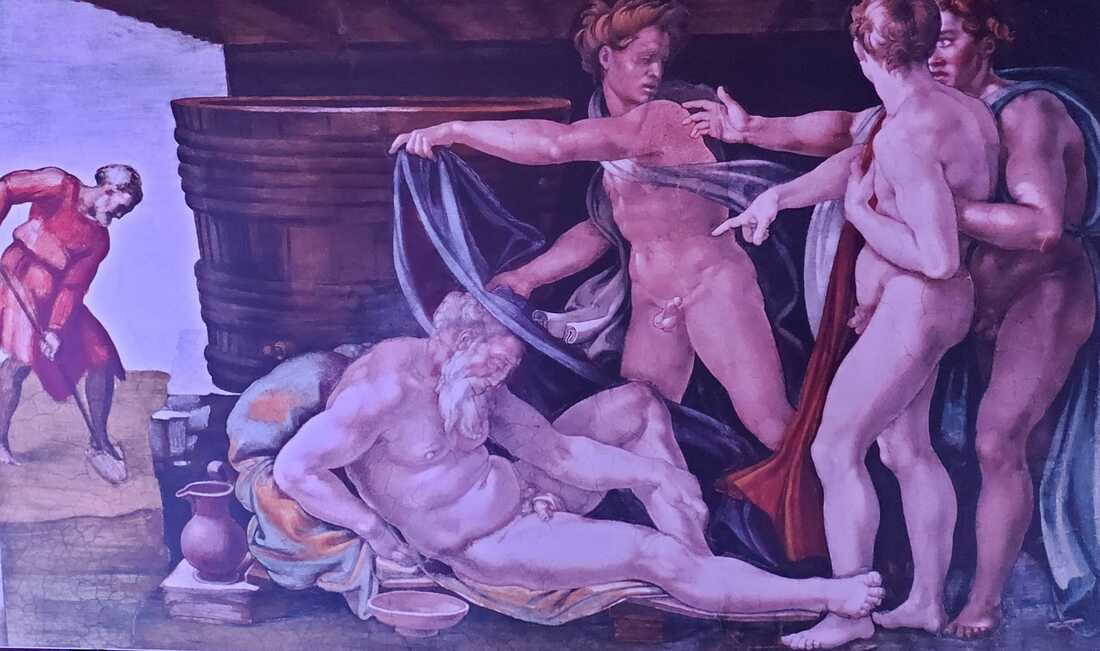
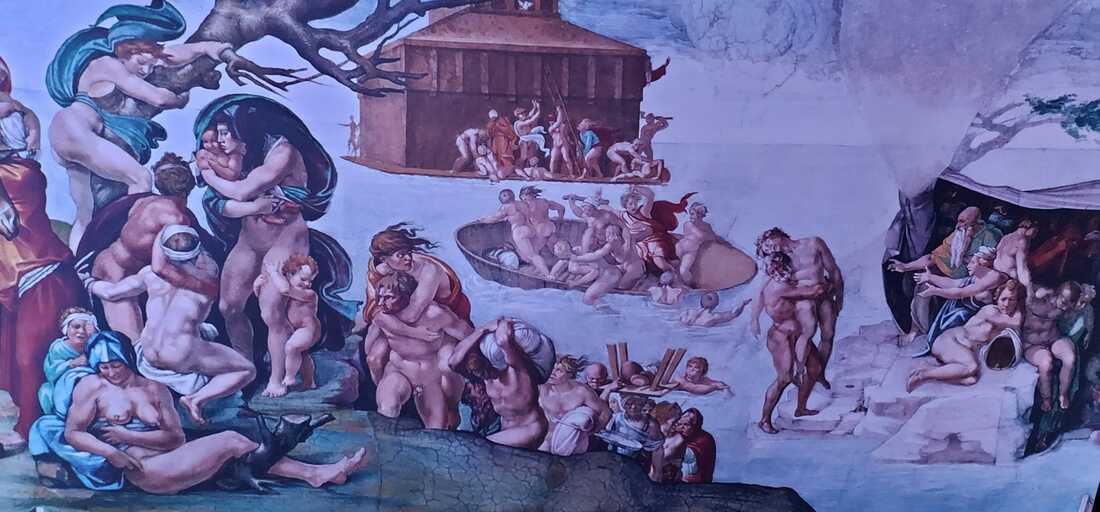
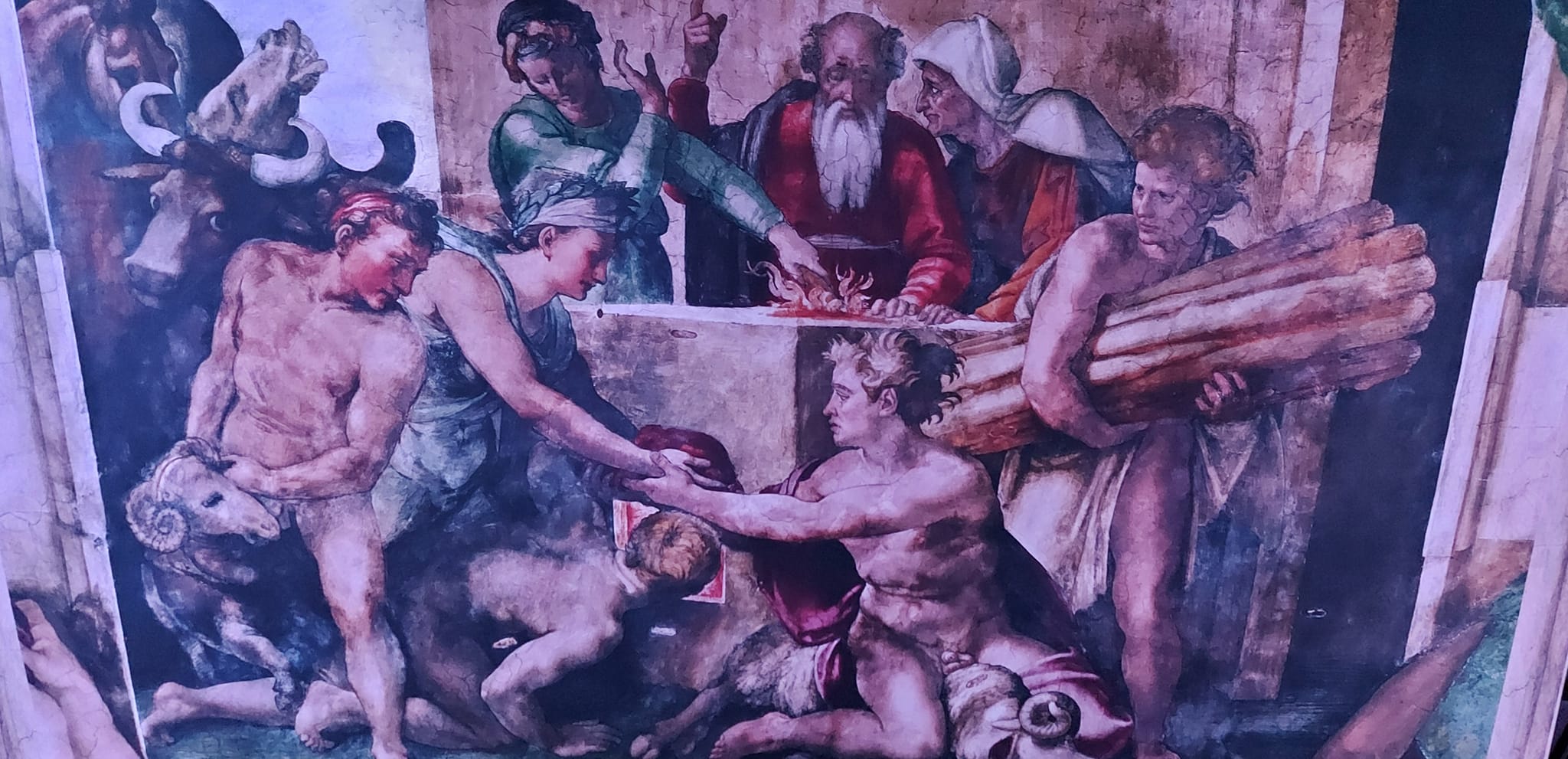
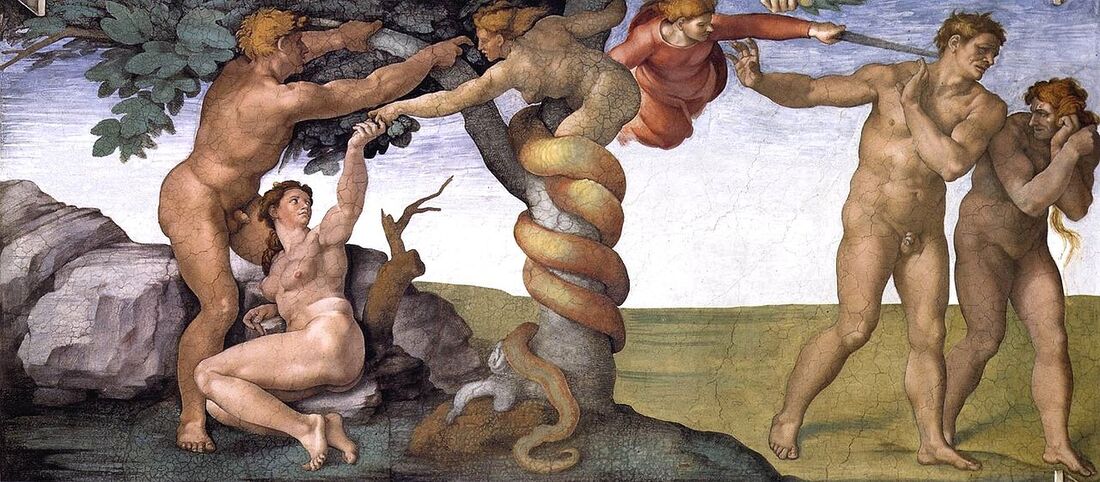
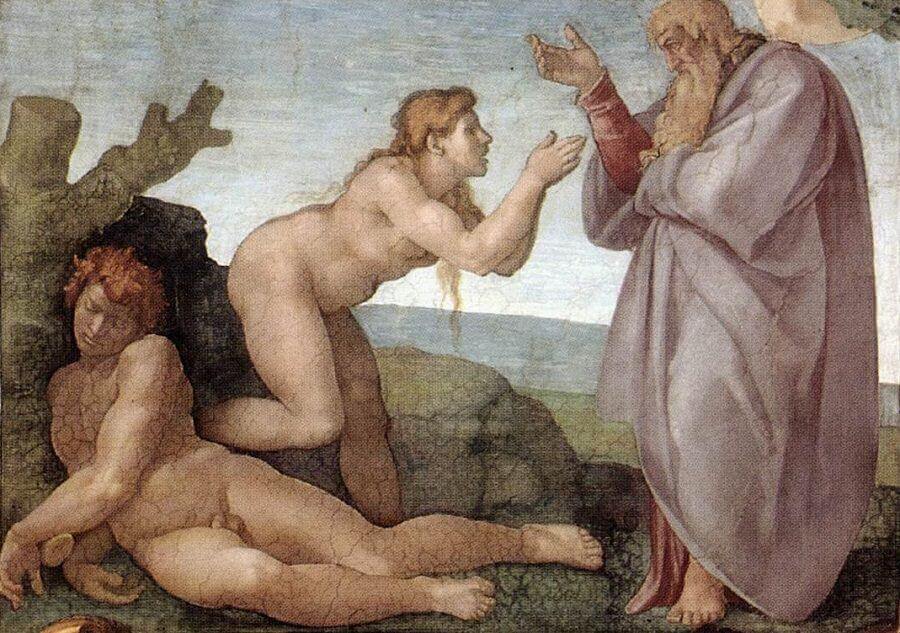
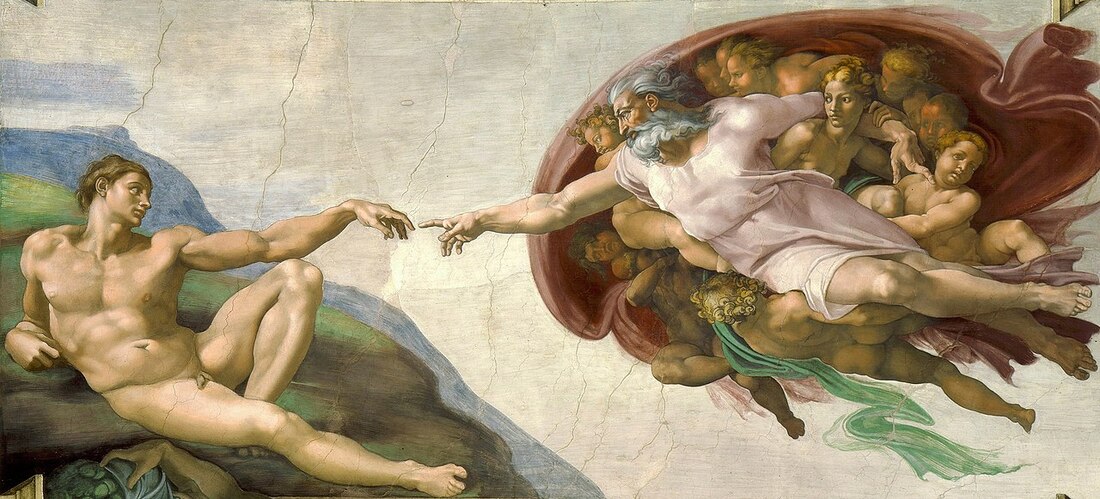
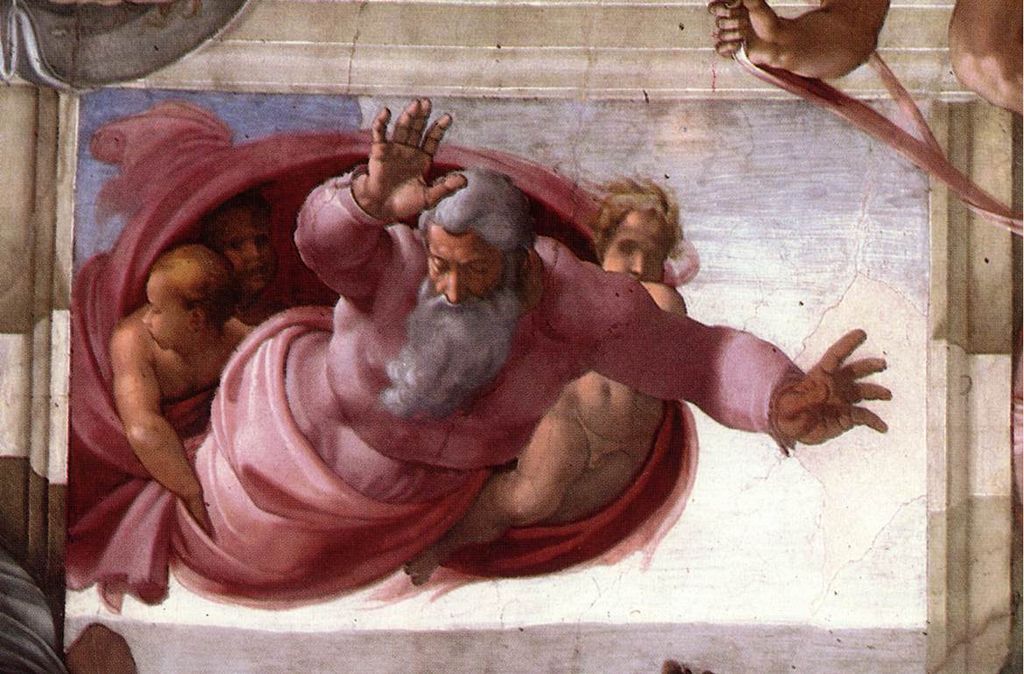
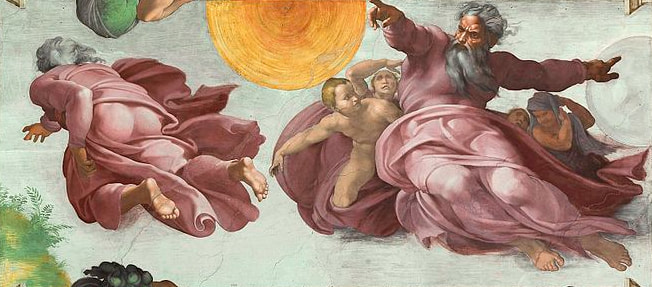
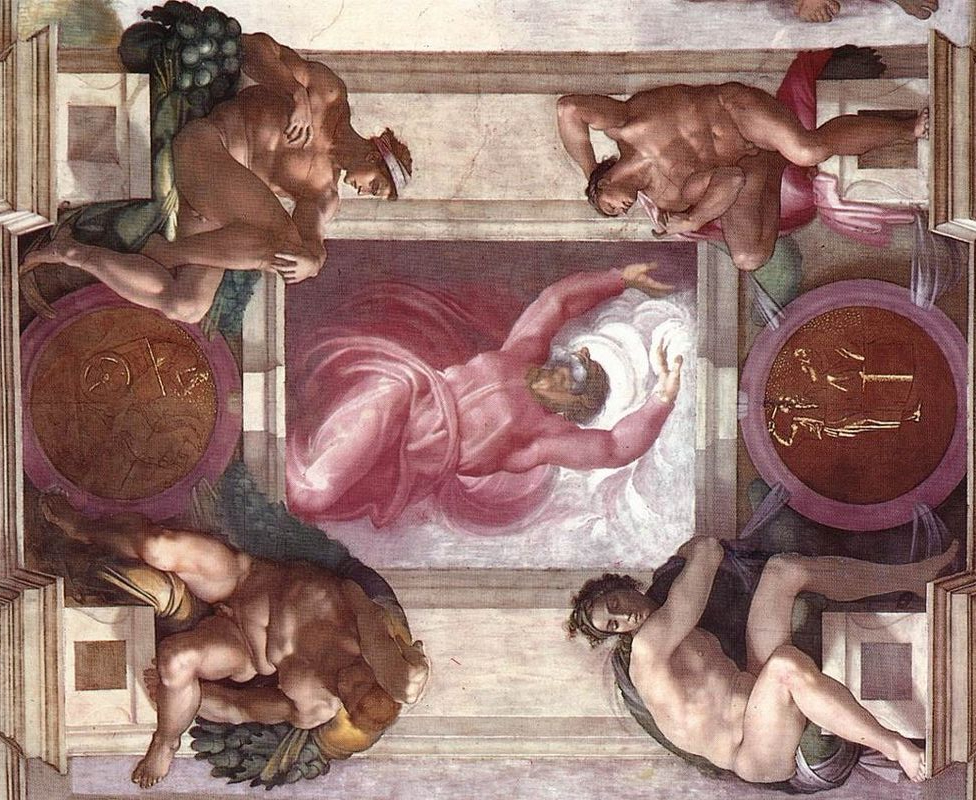
 RSS Feed
RSS Feed